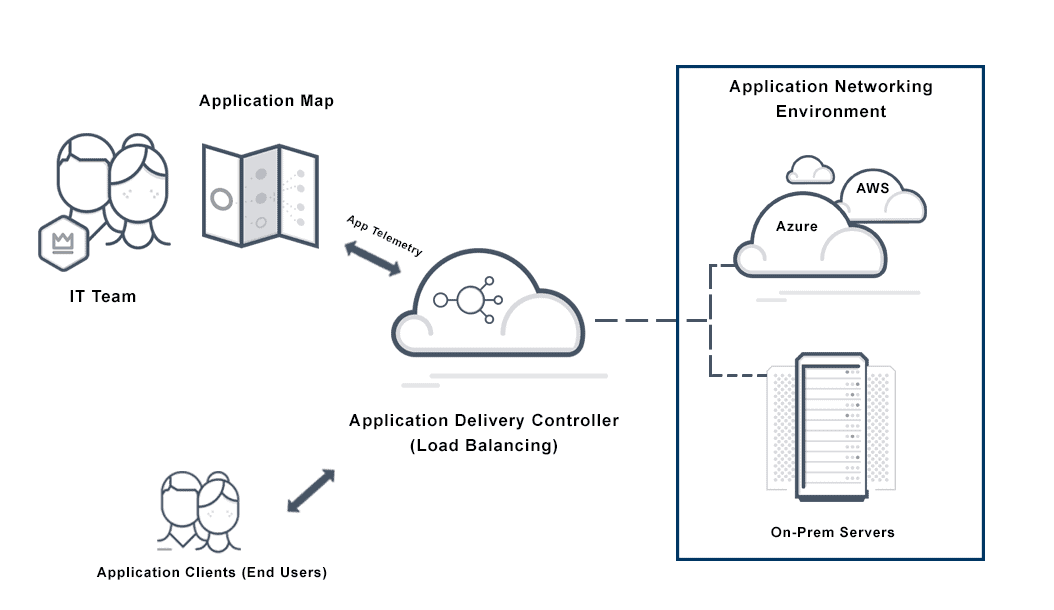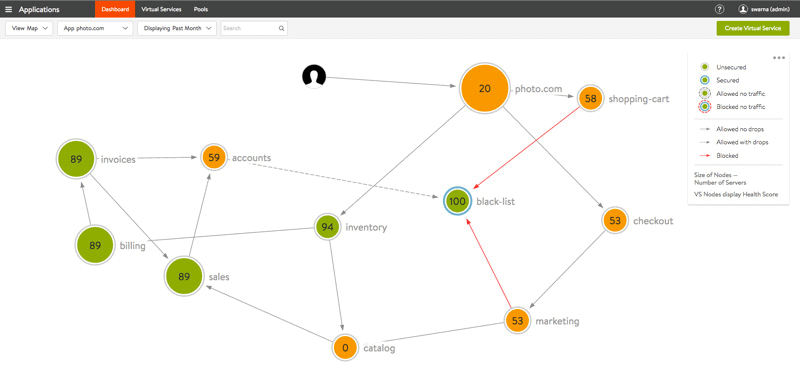Application Mapping Definition
Application mapping refers to the process of identifying and mapping interactions and relationships between applications and the underlying infrastructure. An application, or network map, visualizes the devices on a network and how they are related. It gives users a sense of how the network performs in order to run analysis and avoid data bottlenecks. For containerized applications, it depicts the dynamic connectivities and interactions between the microservices.

What is Application Mapping?
As enterprises grow, the number and complexity of applications grow as well. Application mapping helps IT teams track the interactions and relationships between applications, software, and supporting hardware.
In the past, companies mapped out interdependencies between apps using extensive spreadsheets and manual audits of application code. Today, however, companies can rely on an application mapping tool that automatically discovers and visualizes interactions for IT teams. Popular application mapping tools include configuration management database – CMDB application mapping or UCMDB application mapping. Some application delivery controllers also integrate application mapping software.
Application mapping includes the following techniques:
• SNMP-Based Maps — Simple Network Management Protocol (SNMP) monitors the health of computer and network equipment such as routers. An SNMP-based map uses data from routers to switch management information bases (MIBs).
• Active Probing — Creates a map with data from packets that report IP router and switch forwarding paths to the destination address. The maps are used to find “peering links” between Internet Service Providers (ISPs). The peering links allow ISPs to exchange customer traffic.
• Route Analytics — Creates a map by passively listening to layer 3 protocol exchanges between routers. This data facilitates real-time network monitoring and routing diagnostics.
What are the Benefits of Application Mapping?
Application mapping diagrams can be helpful for the following benefits:
• Visibility – locate where exactly applications are running and plan accordingly for system failures
• Application health – understand the health of entire application instead of analyzing individual infrastructure silos
• Quick troubleshooting – pinpoint faulty devices or software components in seconds by conveniently tracing connections on the app map, rather than sifting through the entire infrastructure
How are Application Maps Used in Networking?
IT personnel use app maps to conceptualize the relationships between devices and transport layers that provide network services. Using the application map, IT can monitor network statuses, identify data bottlenecks, and troubleshoot when necessary.
How are Application Maps Used in DevOps?
Application owners and operations team use app maps to conceptualize the relationships between software components and application services. Using the application map, DevOps team can monitor application health, identify security policy breaches, and troubleshoot when necessary.
What is an Application Mapping Example?
An application map (see image below) provides visual insights into inter-app communications in a container-based microservices application deployment. It captures the complex relationships of containers. An application map can graph the latency, connections, and throughput information of microservice relationships.

Does Avi Networks Offer Application Mapping?
Yes, Avi Networks provides automated service discovery and inter-service application mapping of container ingress. Avi’s real-time dynamic map visualizes communications between services, allowing operators to analyze latency, bandwidth, and request rate, and other critical metrics.
For more on the actual implementation of load balancing, security applications and web application firewalls check out our Application Delivery How-To Videos.
For more application mapping resources see the following: